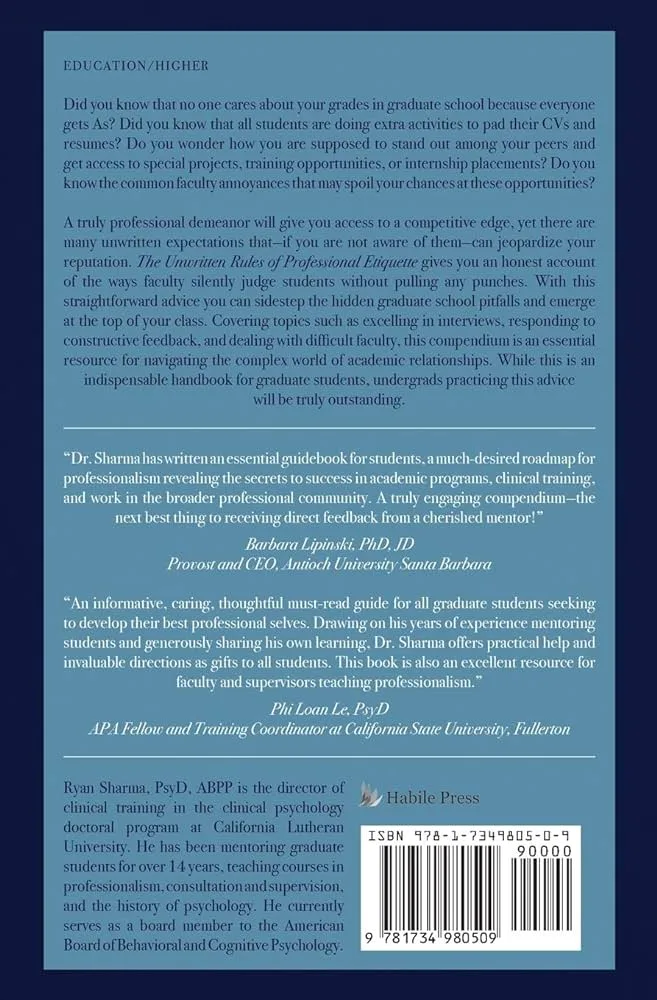What is the Most Common Way That Students Borrow for College? Unveiling the Top Techniques
The most common way that students borrow for college is through student loans, which are financial aid programs that require repayment after graduation. In today’s society, pursuing higher education often comes with a hefty price tag.
Many students find it necessary to seek financial assistance in the form of loans to cover their college expenses. Student loans are the most prevalent method of borrowing for college students. These loans are typically provided by the government or private lenders and require repayment after graduation.
While scholarships and grants can provide some relief, loans are often essential to bridge the gap between available funds and the cost of tuition, books, and living expenses. We will explore the pros and cons of student loans, as well as alternative methods of financing a college education.
Exploring Popular College Funding Techniques
Students often rely on federal student loans as the most common way to finance their college education. These loans come with various options for repayment and are accessible to students with various financial backgrounds. It is crucial for students to understand the terms and responsibilities associated with borrowing for college.
Understanding Federal Student Loans
When it comes to borrowing funds for college, many students turn to federal student loans as their primary option. These loans are provided by the U.S. Department of Education and come with a variety of benefits that make them an attractive choice for borrowers.
Unlike private student loans, federal student loans do not require a credit check or a cosigner. This means that students with little or no credit history can still qualify for these loans. Additionally, federal student loans offer fixed interest rates, which means that the interest rate on the loan remains the same throughout the life of the loan.
Another advantage of federal student loans is the possibility of income-driven repayment plans. These plans adjust the monthly loan payments based on the borrower’s income, making it more manageable for students to repay their loans without causing financial strain.
Furthermore, federal student loans offer various options for loan forgiveness or cancellation. Under specific circumstances, such as working in public service or teaching in low-income schools, borrowers may be eligible to have a portion or all of their loan balance forgiven.
Exploring Private Student Loans
If federal student loans do not cover the full cost of education, many students consider turning to private student loans to fill the gap. Private loans are offered by banks, credit unions, and other financial institutions, and unlike federal loans, they are not backed by the government.
Private student loans typically require a credit check, meaning that borrowers with a strong credit history usually receive lower interest rates. However, students with limited credit experience may struggle to qualify for favorable terms.
| Pros | Cons |
|---|---|
| + Greater flexibility in loan amounts | – Higher interest rates compared to federal loans |
| + Ability to choose between fixed or variable interest rates | – No income-driven repayment plans available |
| + Can be used for a wide range of educational expenses | – Limited loan forgiveness or cancellation options |
Private student loans can provide more flexibility in terms of loan amount and can be utilized for various educational expenses, including tuition, books, housing, and other college-related costs.
However, it is essential to consider the higher interest rates associated with private student loans, which can result in a more significant overall loan repayment amount. Additionally, unlike federal loans, private loans do not typically offer income-driven repayment plans, which can put more financial pressure on borrowers during repayment.
While private student loans can be a viable option to supplement federal loans, it’s crucial for borrowers to carefully compare their options and assess the long-term financial impact of their borrowing decisions.

Credit: www.collegeessayguy.com
Navigating Scholarships And Grants
When it comes to financing a college education, students often turn to scholarships and grants as a way to alleviate some of the financial burden. Scholarships and grants provide students with the opportunity to receive financial aid that does not need to be repaid, unlike student loans.
Sourcing Scholarships
One of the most common ways that students borrow for college is through scholarships. Scholarships are usually awarded based on specific criteria, such as academic achievement, athletic ability, or community involvement. They can be offered by various organizations, including universities, government agencies, and private foundations.
When looking for scholarships, there are several avenues that students can explore:
Creating a table to present information| Scholarship Source | Description |
|---|---|
| University Scholarships | Scholarships provided by colleges and universities to their students |
| Government Scholarships | Scholarships offered by government agencies at the local, state, and federal levels |
| Private Foundations | Scholarships provided by private organizations and foundations |
Leveraging Grants
Another common way for students to borrow for college is through grants. Grants are similar to scholarships, but they are typically need-based and are awarded based on a student’s financial circumstances. Grants can be provided by the government, educational institutions, or private organizations.
Here are the different types of grants that students can leverage for their college education:
Creating an unordered list to present information- Federal Grants
- State Grants
- Institutional Grants
- Private Grants
By taking advantage of scholarships and grants, students can reduce the need to rely solely on student loans and lessen the burden of debt after graduation.
Investigating Work-study Programs
Benefits Of Work-study
Work-study programs present numerous benefits for college students. Firstly, they provide the opportunity to gain valuable work experience while pursuing a degree. This experience can enhance a student’s resume and increase their chances of securing employment after graduation. Additionally, work-study programs often offer flexible schedules, allowing students to balance their work and academic commitments effectively. Furthermore, these programs may also contribute to developing professional networks and mentors within the student’s field of study.
Finding Work-study Opportunities
When seeking work-study opportunities, students can utilize various resources. For instance, colleges and universities typically have dedicated offices or websites where students can explore available positions and apply for work-study jobs. Moreover, students can also inquire with their academic advisors or faculty members about potential work-study openings. Furthermore, local businesses in college towns often participate in work-study programs, providing students with a range of employment options.

Credit: www.nytimes.com
Understanding The Role Of Parents And Guardians
When it comes to financing a college education, students often rely on the financial support and guidance of their parents or guardians. These individuals play a crucial role in helping students navigate the complex world of student loans and funding options. Understanding the various ways parents and guardians contribute can not only impact the student’s educational journey but also their long-term financial well-being.
Parent Plus Loans
A common method of parental contribution is through Parent PLUS Loans. These loans are federally funded, low-interest loans that parents can obtain to help cover the cost of their child’s education. With a Parent PLUS Loan, parents are able to borrow the amount needed to cover the remaining cost of attendance after other financial aid has been applied.
The repayment terms for Parent PLUS Loans are flexible, typically ranging from 10 to 25 years. However, it’s important to note that parents are responsible for repaying these loans, which can have an impact on their own financial stability. Before pursuing this option, parents should carefully consider their ability to repay the loan and the potential long-term consequences.
Other Parental Contribution Methods
In addition to Parent PLUS Loans, parents and guardians have other avenues for providing financial support to their college-bound children. These include:
- Contributing to a 529 Savings Plan: A 529 Savings Plan is a tax-advantaged savings account specifically designed for education expenses. Parents can make contributions to this account, and the funds can be used towards qualified educational expenses.
- Coverdell Education Savings Account: Similar to a 529 Savings Plan, a Coverdell Education Savings Account allows parents to save money for their child’s education with tax advantages. Contributions to this account can be used for qualified educational expenses.
- Personal Savings: Some parents may opt to use their personal savings to help cover their child’s college expenses. This can include savings accounts, investments, or other assets that can be liquidated.
- Home Equity: Parents who own a home may consider using the equity in their property to secure a loan or line of credit to help fund their child’s education. This can be a risky option, as it puts the family home at stake if the loan is not repaid.
It’s important for parents and guardians to carefully consider their financial situation and the implications of each contribution method. Open communication between the student and the parents is crucial in order to establish realistic expectations and assess the affordability of different funding options.
Considering Alternative Avenues
Students often opt for traditional loans as the primary way to finance their college education. However, considering alternative avenues like scholarships, grants, or part-time jobs can help alleviate financial burdens and provide additional support for students.
Considering Alternative Avenues When it comes to financing their education, students are often limited to traditional loans, scholarships, and grants. However, with the rising costs of tuition and other expenses, many students are now exploring alternative avenues to fund their college education. These alternatives offer unique approaches that allow students to borrow money without incurring excessive debt. Let’s take a closer look at two popular alternative avenues that students are considering: Income Share Agreements and Crowdfunding for Education.Income Share Agreements
Income Share Agreements (ISAs) are becoming an increasingly popular way for students to borrow money for college. In an ISA, a student agrees to pay a percentage of their post-graduation income in exchange for funding their education. This means that instead of making fixed monthly payments, students only start repaying their loans once they start earning a certain income threshold. As a result, ISAs provide students with greater flexibility and alleviate the burden of monthly loan payments. Moreover, ISAs often come with income caps and predetermined repayment periods, ensuring that students are not overwhelmed by long-term debt obligations.Crowdfunding For Education
Crowdfunding has revolutionized the way individuals raise funds for various purposes, including education. Through crowdfunding platforms tailored specifically for education, students can create compelling campaigns and appeal to a global network of supporters. Whether through social media, word-of-mouth, or personal connections, crowdfunding allows students to tap into the generosity of both their immediate circles and complete strangers. It empowers students to take control of their educational finances by directly reaching out to potential donors who believe in their potential. For those with unique circumstances or limited access to traditional financing options, crowdfunding can be a game-changer. In conclusion, students are increasingly turning to alternative avenues such as Income Share Agreements and Crowdfunding for Education to finance their college education. These alternatives provide students with greater flexibility, minimize the burden of debt, and open doors to new opportunities. By considering these alternative avenues, students can take charge of their financial future and pursue their educational goals without the overwhelming weight of traditional loans.:max_bytes(150000):strip_icc()/market-orientation.asp-final-dff1c3d263a242a7996bd5ccc788f864.png)
Credit: www.investopedia.com
Frequently Asked Questions For What Is The Most Common Way That Students Borrow For College?
How Do Most Students Borrow For College?
Most students borrow for college through student loans or financial aid programs offered by the government and private lenders. These loans can be used to pay for tuition, books, housing, and other education-related expenses.
What Types Of Loans Are Available For College Students?
College students can access different types of loans, including federal loans such as Stafford, Perkins, and PLUS loans. Private loans from banks, credit unions, and online lenders are also an option. It’s crucial for students to research and compare the terms and interest rates of each loan option before choosing.
Are Scholarships And Grants Better Than Loans For College?
Scholarships and grants are typically considered better options than loans because they don’t require repayment. These forms of financial aid can be obtained through academic achievements, talents, or financial need. Students should explore scholarship and grant opportunities to reduce their reliance on loans.
Conclusion
Choosing the right borrowing method is crucial for college financing. From federal loans to private student loans, each option comes with its own set of advantages and risks. Understanding the implications of each borrowing method empowers students to make informed decisions and effectively manage their college debt.
Ultimately, careful consideration and financial planning are essential for a successful college experience.
{ “@context”: “https://schema.org”, “@type”: “FAQPage”, “mainEntity”: [ { “@type”: “Question”, “name”: “How do most students borrow for college?”, “acceptedAnswer”: { “@type”: “Answer”, “text”: “Most students borrow for college through student loans or financial aid programs offered by the government and private lenders. These loans can be used to pay for tuition, books, housing, and other education-related expenses.” } } , { “@type”: “Question”, “name”: “What types of loans are available for college students?”, “acceptedAnswer”: { “@type”: “Answer”, “text”: “College students can access different types of loans, including federal loans such as Stafford, Perkins, and PLUS loans. Private loans from banks, credit unions, and online lenders are also an option. It’s crucial for students to research and compare the terms and interest rates of each loan option before choosing.” } } , { “@type”: “Question”, “name”: “Are scholarships and grants better than loans for college?”, “acceptedAnswer”: { “@type”: “Answer”, “text”: “Scholarships and grants are typically considered better options than loans because they don’t require repayment. These forms of financial aid can be obtained through academic achievements, talents, or financial need. Students should explore scholarship and grant opportunities to reduce their reliance on loans.” } } ] }
